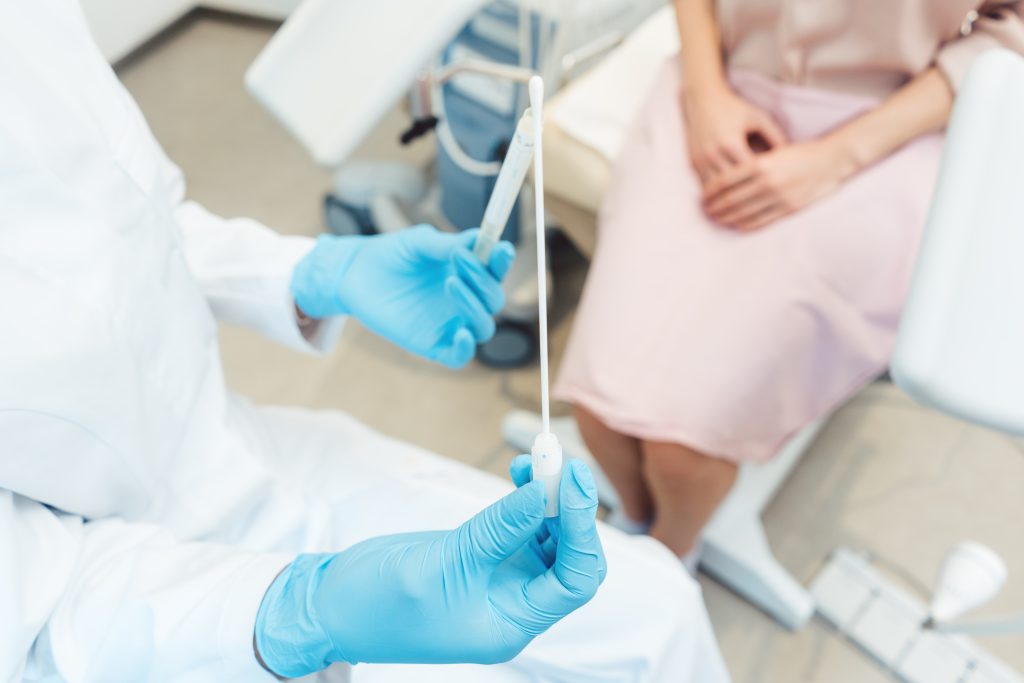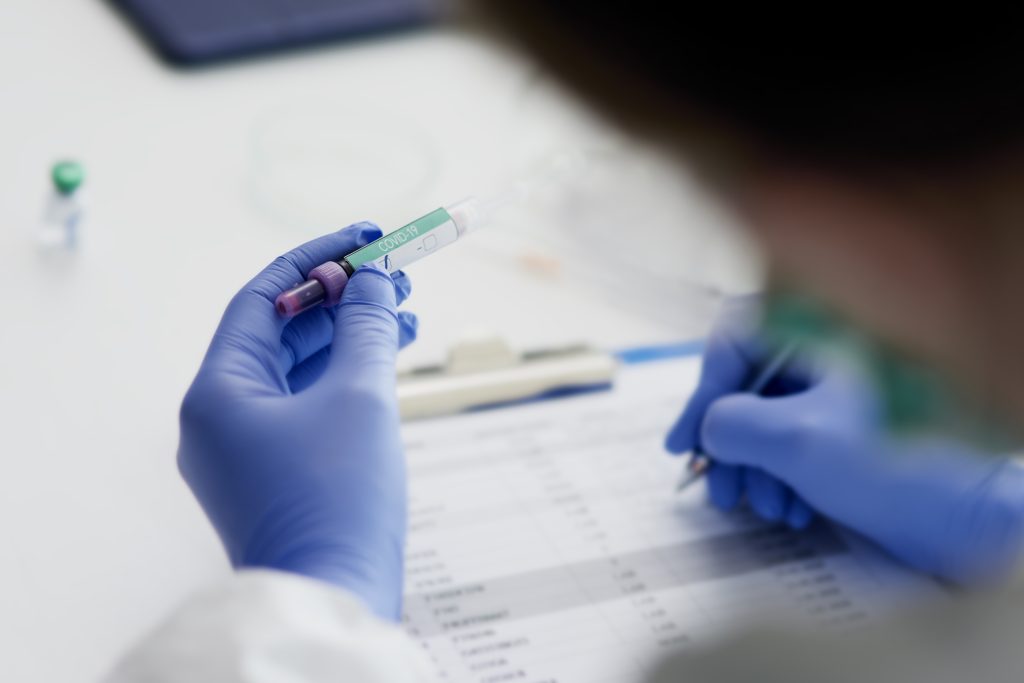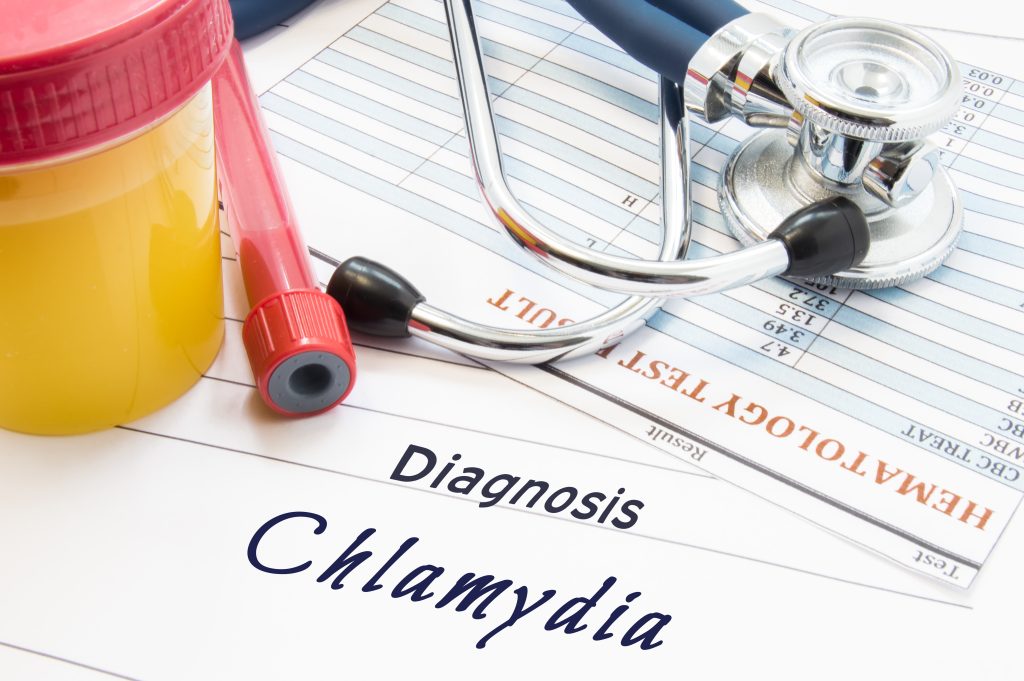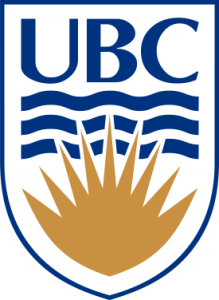Professor Robert Brunham | Chlamydia trachomatis Through the Lens of Epidemiology, Immunology, and Genomics
Chlamydia trachomatis is the leading cause of both sexually transmitted bacterial disease and infectious blindness around the world. Professor Robert Brunham from the University of British Columbia and the British Columbia Centre for Disease Control, is an expert in the biology, prevention, and control of infectious diseases. He and his research team are using the epidemiology, immunology, and genomics of Chlamydia trachomatis in the context of evolutionary medicine to design and develop an effective vaccine.
Understanding the Origins of Human Health and Disease
Evolutionary medicine seeks to understand the origins of human health and disease by taking an evolutionary perspective to explain certain traits, behaviours, and diseases. It is argued that the traits exhibited by humans, as well as the diseases we suffer from, can be better understood by considering their evolutionary history and how they might have provided adaptive advantages in the past. This perspective can also help guide new and effective medical interventions and treatments. Exciting recent developments in genomics (the study of an organism’s complete DNA sequence) are driving the incorporation of evolutionary medicine into clinical practice across medical specialities, including hereditary illness, cancer, and infectious disease.
Professor Robert Brunham is an infectious disease specialist clinician and academic at the University of British Columbia. He is a leader in the field of evolutionary medicine, and one aspect of his research is dedicated to the epidemiology, immunology, and genomics of Chlamydia trachomatis (C. trachomatis). By combining these three disciplines, he is providing new insights into the relationship between humans and C. trachomatis, and also the development of a vaccine against the pathogen.

Chlamydia trachomatis and Infectious Disease Biology
Chlamydia is a type of bacteria that can only replicate within the cells of other organisms. Examples affecting humans include the pathogens C. trachomatis and C. pneumoniae. With over 128 million new cases a year, C. trachomatis is the most common cause of sexually transmitted bacterial disease worldwide.
Sexually transmitted C. trachomatis is a global public health concern, particularly in women. Whilst overt symptoms may not always accompany the infection, it can nonetheless cause pelvic inflammatory disease, chronic abdominal pain, and long-term reproductive consequences such as reduced fertility and an increased risk of ectopic pregnancy. Infection with C. trachomatis increases the risk of HIV infection and is also thought to be a risk factor for cancer caused by human papillomavirus.
More than two-thirds of the global cases of sexually transmitted C. trachomatis occur in less economically developed countries with limited diagnostic and treatment services. Infection is much more common in younger people. As well as reproductive tract infections, certain strains of C. trachomatis can cause trachoma – a serious childhood eye infection that can lead to irreversible blindness in adults. Sexually transmitted C. trachomatis infections can, in theory, be prevented by practising safe sex and treated with antibiotics. However, there remains an urgent need for a vaccine to protect against and prevent infection, as antibiotics are not always available in resource-limited settings and do not protect against reinfection.

Epidemiology and Public Health Implications
The control of infectious diseases typically focuses on behaviour change, screening, treatment, and vaccines. Due to its significant impact on public health, C. trachomatis has been a notifiable disease in British Columbia since the mid-1990s, and a control programme was introduced to limit the spread of the disease across the province. This intervention focused on increased testing and antibiotic treatment to shorten the duration of infection and subsequently reduce the opportunity for transmission. Within a few years, case rates had halved, but by 1998, cases began to rise again. By the early 2000s, cases were even higher than they were before the programme began.
These dramatically increasing rates were associated with rising levels of reinfection – that is, infection with the same or a different strain after a previous infection has been cleared either by treatment or immune action. Resolving this mystery of rising rates under an apparently effective programme required an understanding of the natural history of C. trachomatis infection.
At the British Columbia Centre for Disease Control, Professor Brunham proposed that the rise in cases was due to the population becoming increasingly susceptible to reinfection as a result of the C. trachomatis control programme. The control programme detected infection earlier and allowed prompt treatment – but this earlier intervention may have reduced the development of natural immunity. Previous studies have shown that 50% of women with C. trachomatis infection not treated with antibiotics will still show detectable levels of bacteria a year after the infection is identified. In other words, natural immunity takes a long time to develop. In a study where all women were treated, those who had spontaneously cleared the infection prior to treatment were four times less likely to become reinfected than those who were not able to naturally clear the infection. Work in mice has also shown that early antibiotic treatment of Chlamydia bacteria reduces the development of natural immunity.
To test this intriguing hypothesis, Professor Brunham analysed Chlamydia case data from the Greater Vancouver area from between 1989 and 2003, and developed a mathematical model to assess the impact of treatment at different time points after infection. These analyses confirmed that the likelihood of reinfection had increased by 4.6% per year since the beginning of the control programme, with a higher risk of reinfection for younger people and women. Results from the model closely matched the ‘real life’ data and suggest that although early treatment reduces the number of infections in the short-term, reducing the opportunity for immunity to develop increases the number of reinfections, and so, prevalence can reach or even exceed the pre-control programme level.
When Professor Brunham added a hypothetical vaccine that would provide ten years of immunity to the model, they found that this allowed C. trachomatis infection to be entirely eliminated. This critical finding underscores the importance of an effective vaccine to halt the spread of C. trachomatis.

Developing an Effective Vaccine
Clearly, vaccination will be key to reducing the burden of C. trachomatis infection around the world. Understanding the relationship between bacteria and our immune system is essential to this complex process.
Much of what we know about the immune response to C. trachomatis comes from mouse studies using a slightly different Chlamydia species. Nonetheless, studies showing that untreated women are able to clear C. trachomatis infections confirm that humans are able to generate an immune response.
Professor Brunham reviewed the data from mouse studies to help guide vaccine research. Mouse studies have shown that, in particular, T-cells (immune cells that directly attack foreign material) and a molecule called interferon-gamma are required to protect against C. trachomatis infection and reinfection.
A previous vaccine using an inactivated bacteria was trialled but was not successful, and research is now focussing on subunit vaccines – where proteins from an organism are attached to something that generates a strong immune response. Animal studies showed that a large portion of immune protection from C. trachomatis comes from T-cells, so the vaccine needs to include a protein that stimulates this response. A potential target is the MOMP protein – this makes up 60% of the proteins on the outside of the bacteria. However, this protein is not the same across the many types of C. trachomatis, so it would not provide broad protection. Additional targets, such as polymorphic membrane proteins, are required for a fully effective vaccine.
There are several challenges to designing a C. trachomatis vaccine; the bacteria are good at evading the immune system, and often, when the immune system does react to the bacteria, it results in inflammation – the cause of many of the symptoms. C. trachomatis infects the mucosal membrane cells of the female genital tract, and pathogens that target mucosal sites often need different types of vaccines and different vaccine delivery methods compared to pathogens that infect other areas. The immune system of the female genital tract is also uniquely impacted by sex hormones – a vaccine would have to be able to reach the site and generate a mucosal immune response. Professor Brunham’s work highlights the importance of an organism’s natural evolutionary history when developing vaccine candidates.

The Impact of Genomics
Progress in genomics is revolutionising the field of microbiology, including our understanding of Chlamydia. Professor Brunham and his collaborators sequenced the DNA of several strains of Chlamydia, knowing that new insight into the organism’s genetic makeup would aid the understanding of its traits and potential health implications.
Professor Brunham compared the genetic information from the two strains they sequenced and previously sequenced Chlamydia strains. This allowed them to understand the evolutionary relationships between the bacteria as well as investigate the genetic adaptations and functions of specific genes. They found that the strains they sequenced had very similar genomes to the previous strains. In explanation of this, they suggest that, unlike other bacteria, which tend to coexist with lots of different species as intracellular bacteria, Chlamydia strains exist inside human cells and so are less likely to ‘pick up’ additional bacterial DNA.
Some differences were found between the two strains, either caused by or causing the different host habitats of the two strains. For example, they found that C. trachomatis has a gene coding for a protein that inactivates the protective interferon-gamma molecule produced by T cells and thus increases the length of time that the organism can remain in the infected person. Perhaps most importantly, because the genome encodes all the possible vaccine proteins, this genomic study reinforces the assertion that the Chlamydia genome offers considerable immunological interest.
By combining epidemiology, immunology, and genomics, Professor Brunham highlights the importance of a vaccine to control the Chlamydia pathogen. His important work is also aiding vaccine design and development by shedding new light on the bacteria’s genetics and the immune response it generates.
SHARE
DOWNLOAD E-BOOK
REFERENCE
https://doi.org/10.33548/SCIENTIA983
MEET THE RESEARCHER

Professor Robert Brunham
Department of Medicine
University of British Columbia
Canada
Professor Robert Brunham received his medical degree from the University of British Columbia. He has since become an expert in infectious disease prevention and control, and uses epidemiology, immunology, and genomics to define the biology of important sexually transmitted and emerging pathogens. He bases his research on the principles of evolutionary medicine and integrates medical practice and science with the humanities and evolutionary biology. He was previously Head of the British Columbia Centre for Disease Control and is now the Head of the Vaccine Research Laboratory at the University of British Columbia Centre for Disease Control. Professor Brunham is a pioneer in the field and has received multiple honours, including the Living Legend Award and the Order of British Columbia.
CONTACT
E: robert.brunham@bccdc.ca
KEY COLLABORATORS
Dr Brunham’s approach to medical research was inspired by Dr Macfarland Burnet via his book ‘The Natural History of Infectious Disease’. Dr Brunham’s key collaborators have been Drs Frank Plummer (University of Manitoba and former Scientific Director General of the National Microbiology Laboratory at Winnipeg, Canada), Timothy Read (Emory University School of Medicine, Division of Infectious Diseases & Department of Human Genetics, USA) and Leonard Foster (University of British Columbia, Department of Biochemistry and Molecular Biology, Canada).
FUNDING
National Institutes of Health
FURTHER READING
R Brunham, Using Epidemiology, Immunology, and Genomics to Study the Biology of Chlamydia trachomatis, Sexually Transmitted Diseases, 2021, 48(5), 319–322. DOI: https://doi.org/10.1097/OLQ.0000000000001316
H Yu, KP Karunakaran, X Jiang, et al., Comparison of Chlamydia outer membrane complex to recombinant outer membrane proteins as vaccine, Vaccine, 2020, 38(16), 3280–3291. DOI: https://doi.org/10.1016/j.vaccine.2020.02.059
R Brunham, The genome, microbiome and evolutionary medicine, Canadian Medical Association Journal, 2018, 190(6), E162–E166. DOI: https://doi.org/10.1503/cmaj.170846
KP Karunakaran, H Yu, LJ Foster, RC Brunham, Development of a Chlamydia trachomatis T cell Vaccine, Human Vaccines, 2010, 6(8), 676–680. DOI: https://doi.org/10.4161/hv.6.8.12299


REPUBLISH OUR ARTICLES
We encourage all formats of sharing and republishing of our articles. Whether you want to host on your website, publication or blog, we welcome this. Find out more
Creative Commons Licence (CC BY 4.0)
This work is licensed under a Creative Commons Attribution 4.0 International License. 
What does this mean?
Share: You can copy and redistribute the material in any medium or format
Adapt: You can change, and build upon the material for any purpose, even commercially.
Credit: You must give appropriate credit, provide a link to the license, and indicate if changes were made.
SUBSCRIBE NOW
Follow Us
MORE ARTICLES YOU MAY LIKE
Dr Ralf Adam | New Technologies Shaping the Future of Oral Hygiene
Understanding the efficiency of various toothbrush technologies is essential for achieving optimal oral health. Dr Ralf Adam, who leads a dedicated team at Procter & Gamble in Germany, is keen to investigate the complexities of these technologies. His team have provided new insights into the best toothbrush types for plaque removal and the maintenance of gum health. By highlighting the importance of informed oral care decisions and ongoing investigations, this vital research works towards ensuring everyone can achieve a brighter, healthier smile.
Dr Toby Phesse | Revealing the Mysteries of Wnt Signalling: Novel Approaches to Beating Cancer
Cancer remains a leading cause of mortality worldwide, and the need for new, more effective treatments remains an urgent challenge. Dr Toby Phesse from Cardiff University in the UK focuses on the role of the Wnt receptor found on the surface of cells and its involvement with cell communication and cancer growth, bringing fresh hopes for new therapeutic options.
Dr Vijay Reddy | The Virus World Database: An Invaluable Resource for Public Health and Healthcare
Severe viral disease presents an ongoing challenge to the health of humankind. While unparalleled developments in science and technology are improving our understanding of such viruses, this information needs to be readily accessible to researchers to ensure continued progress in public health and healthcare. Dr Vijay Reddy and his colleagues at the Hormel Institute (University of Minnesota) developed the Virus World database, an invaluable resource that details the genome, structure, and host of practically every discovered virus to date.
Professor Ralf Herwig | Deciphering the Enigma of Vitamin D and the Immune System
Vitamin D has been studied as a treatment for a large number of diseases and conditions, from cancer to autism to COVID-19. However, its mode of action is not completely understood. Professor Ralf Herwig carries out his research at HG Pharma GmbH (Austria) and Ulster University (UK). His vital work explores the role of vitamin D in the body with a view to unlocking its potential as a treatment for a variety of health conditions involving the immune system.





